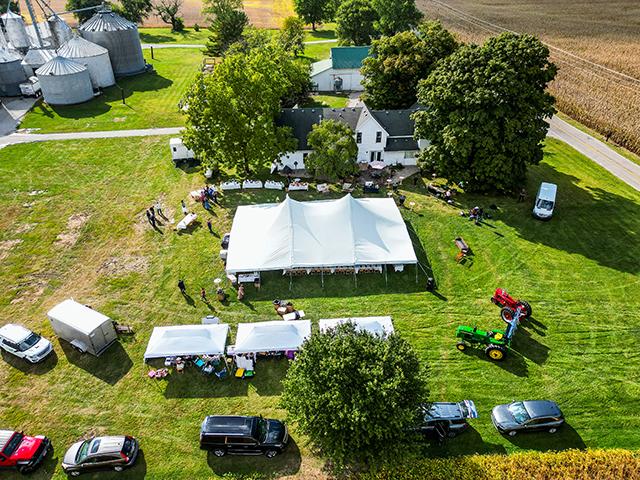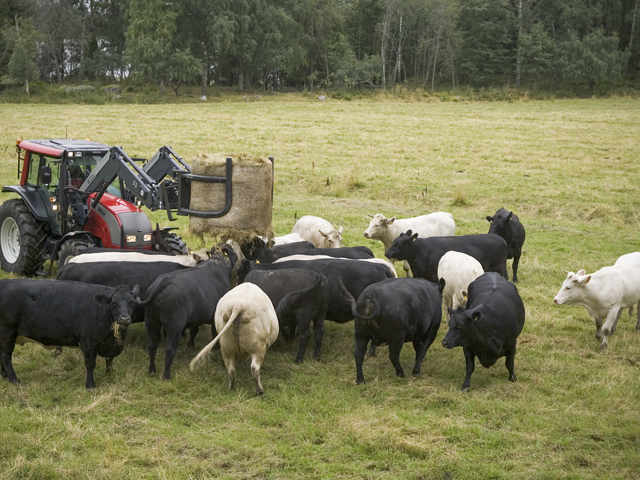Inflation's Drag on Proteins
Input Costs Will Continue to Challenge Livestock Producers Into 2022
In its year-end report on animal proteins, the team of researchers at Rabobank presents a mixed message but leaves little doubt that input costs for producers will remain a challenge moving into 2022.
The report, "Global Animal Protein Outlook 2022" from Justin Sherrard, global strategist for animal protein at RaboResearch Food & Agribusiness, predicts continued market volatility for the global protein sector. Prices, Sherrard wrote, will remain firm in 2022, supported by demand and ongoing supply limits. But those higher prices won't necessarily mean producers will have much breathing room around input costs.
Some key takeaways from the report include:
FEED PRICES
In North America, the group projects feed prices for 2022 will remain high, compared to the last five years. Rabobank's feed price monitor shows the poultry price index and the pork price index at or below the feed index, with the beef price index more positive by comparison. Inflation will continue to push up food prices, with the group reporting global meat prices at their highest point since 2014. Other key issues for the sector in 2022 will be labor constraints, high freight costs and energy costs.
SUSTAINABILITY VALUES
Globally, sustainable animal protein continues to gain momentum, with Rabobank reporting that for 2021 (January through August), the issuance of loans/bonds linked to sustainability continued its steady growth. The report notes that while consumers "have not yet demonstrated a willingness to pay higher prices for food with more sustainable attributes," the pressure in the areas of improved efficiency, brand reputation, capital and regulation will continue and motivate protein supply chains to emphasize and grow sustainability.
P[L1] D[0x0] M[300x250] OOP[F] ADUNIT[] T[]
BEEF MARKET 2022
The U.S. is at a threshold moving into 2022, with the outlook for reduced fed cattle supplies. For cattle producers, that will ultimately mean stronger prices. Rabobank analysts reported the fed cattle supply at 15% above operational packing capacity in 2020 and 2021; but by the second quarter of 2022, they anticipate the industry will finally find a balance between cattle numbers and packing capacity. Projections from the group point to a drop in annual fed slaughter in North America by 2.5% (year over year). China, the report predicts, will be behind a 2.8% growth in U.S. beef exports -- after a 17% drop in 2021. Expected U.S. beef cow numbers will be at 30.6 million head by January 2022.
Although packers will still have healthy margins compared to pre-pandemic highs, continued export growth, declining beef production (down 2.7% year over year) and general economic inflation will provide price support for the cattle markets.
BEEF'S SUPERPOWER
Pure and simple, demand for beef will be its superpower moving into the new year -- both in terms of domestic consumption and exports.
Don Close, Rabobank's North American senior protein analyst, said consumers have had more discretionary income recently, and that has helped the beef industry immensely on the retail price front.
"Cattle and the beef industry as a whole are the benefactors of both the contraction in U.S. beef supplies, and our current and anticipated growth in exports," Close told DTN. "We have less supply coming in the front door, and more demand."
Asked why it is taking longer than expected to see the scales balance between feeder supplies and packer slaughter, Close said it's true everyone who follows the cattle markets expected to see the shift sooner than second quarter 2022.
"When you take all the industry analysts and commentators who have been telling producers this will get better for so long, I wouldn't be surprised if not a single producer believes any of us anymore," he said. "The reason this has taken longer than anyone anticipated is really due to these labor shortages we've seen across the country. Packers have not been able to ramp up slaughter and fully capitalize on exorbitant margins available today. It's a kind of COVID fallout. They can't ramp up slaughter, so there is a bottleneck that has slowed us from cleaning up that front-end supply. It's essentially kept us in a sideways pattern for the last 16 weeks."
At some point, Close said, even if packers don't move forward as fast as the industry might like, feeder supplies will tighten. And after three years of liquidity, the contraction in available supplies will be the driver behind opportunities for higher cattle prices.
Victoria Myers can be reached at vicki.myers@dtn.com
(c) Copyright 2021 DTN, LLC. All rights reserved.






